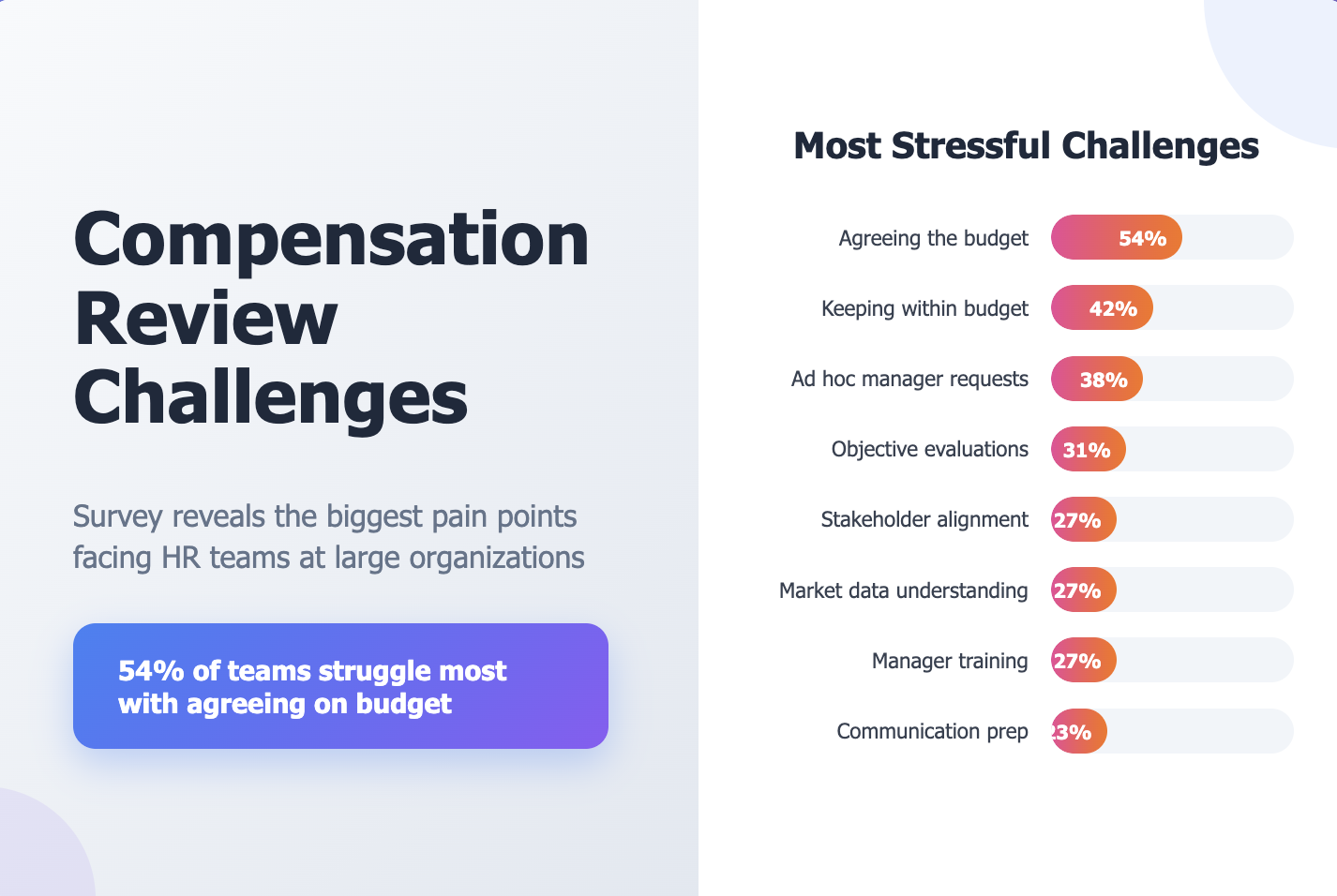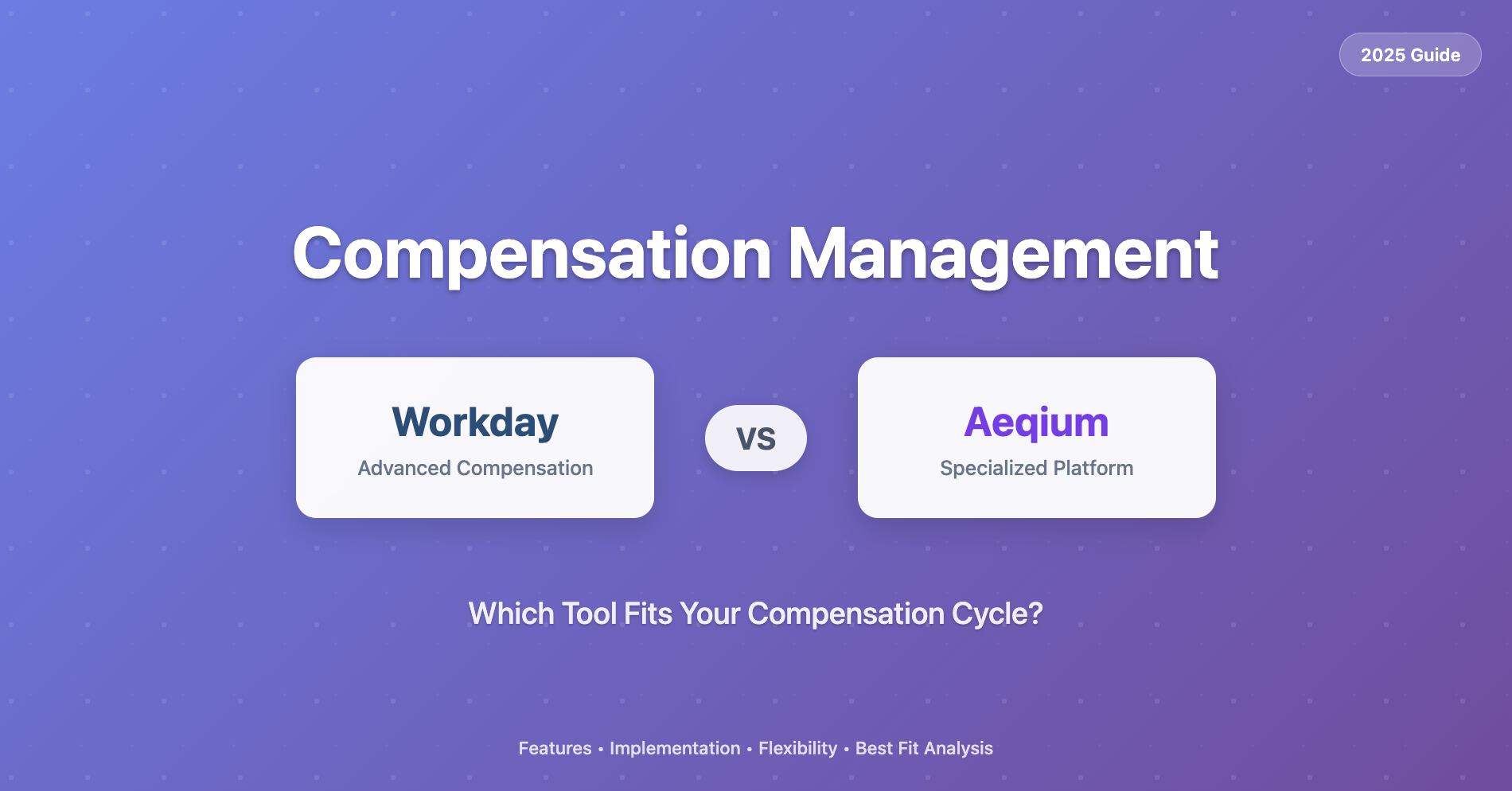Common Compensation Mistakes To Avoid

It’s hard to make people happy with their compensation, but it’s very easy to make them unhappy. Comp is the first signal that employees use to determine whether they’re appreciated, and feeling under-appreciated is a top cause of attrition. Luckily, many of the most common compensation mistakes are simple to avoid. Keep these pitfalls in mind, and avoid them, to keep your team happy and motivated.
Infrequent Salary Increases
Most companies in the tech industry grant regular raises and compensation changes, and employees have come to expect regular comp updates as part of their total rewards. In addition to making employees feel valued, regular compensation changes are a signal that your organization makes compensation a priority. If you aren’t regularly adjusting compensation, employees may very reasonably wonder if you’re paying attention to their pay at all.
At many companies, especially startups, compensation changes are reactive. You might notice that someone’s pay feels too low and give them a raise, or decide on a merit increase based upon an important project reaching its conclusion. This ad hoc strategy works when a company is very small, but as you grow people can fall through the cracks.
The solution: Schedule checkpoints when you re-evaluate compensation, typically during a performance review period. Since you want to make sure that you aren’t missing anyone, you should institute this policy before you need it, even when your company is relatively small (20-30 employees).
People Operations should use a spreadsheet or a tool like Aeqium’s compensation insights to track how long it’s been since each employee last received a raise. Employees in the tech industry who are meeting or exceeding expectations should receive a raise of some form roughly every year provided that the company isn’t facing significant headwinds.
Failing to Refresh Equity
Companies typically grant equity under a few different circumstances:
- A large grant upon hiring
- Periodic refresh grants due to tenure
- Significant grants when employees are promoted
These grants typically vest over multiple years, and vary in size (new hire grants are larger than promotion grants, which are larger than refresh grants). As tenured employees’ grants expire, it’s easy for them to inadvertently wind up vesting very little equity, especially relative to what they might have vested in prior years. When stock is a major part of your company’s compensation, this poses an immediate employee retention risk.
Many companies set up an equity vesting structure but forget to set up a refresh strategy. They hire their first employees, typically on a 4-year vesting schedule, and begin to build their team and product.
But one day, after 2-3 years of growth, the first cadre of employees hired begins to agitate for more equity as they can see their grants’ expiration dates on the horizon. At this point, many companies scramble to grant refreshes in order to keep tenured employees motivated and happy. In the best case, retroactively troubleshooting employee equity is time consuming. In the worst case, managers make ad hoc decisions that create or exacerbate existing inequities (for example, by making larger grants to employees who agitate the loudest).
The solution: Anticipate vesting issues and make refresh grants ahead of time, ideally by structuring your equity program with regular refresh grants that allow you to motivate your team, reward high performers, and avoid discontinuities.
The most important strategy is to get an equity refresh plan in place and stick to it. We’ve included a list of options to draw from for inspiration here.
If you’ve already run into these problems and are setting up an equity refresh program after a few years in business, don’t worry about it – it’s better to set up an equity system late than not at all. But make sure to look out for and correct any issues that may have accumulated before you put a plan in place.
Salary Compression
As market conditions change, comp expectations for a role shifts. This is especially true during labor crunches, as most employers will increase their offers to account for a rising market.
Once you begin to adjust compensation to account for a changing market, you run the risk of salary compression. Salary compression occurs when you hire new team members at compensation levels that are very similar to more experienced employees who are already on your team. This understandably causes resentment. An even worse incarnation, salary inversion, occurs when you pay new, inexperienced employees more than long-tenured employees. If you ever find yourself in this situation, you’re in for some very difficult conversations.
When the market shifts rapidly, the losers are tenured employees who haven’t recently tested the job market. By remaining at one company, employees don’t get the opportunity to rise with the market unless they’re aggressive job-hoppers. Even if you receive an annual 1-3% cost of living adjustment, you’ll rapidly fall below market when salaries are rising by 5-10%. Understandably, salary compression can be highly demoralizing – there’s nothing quite as painful as learning that your new coworker with 3 years less experience is making more than you.
The solution: Combat salary compression by setting and sticking to compensation bands. When the market moves, you should adjust your bands accordingly, ensuring that you prevent salary compression or inversion from taking place.
Most importantly, you should continuously track where existing employees are in these bands. If an employee falls below market, either make market adjustments to their comp or bring them inline with your bands at the first reasonable opportunity. Using compensation bands means that a rising tide will lift all boats appropriately, preserving a fair system for your entire team.




